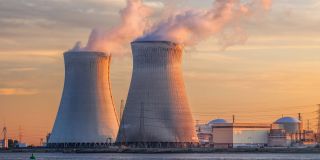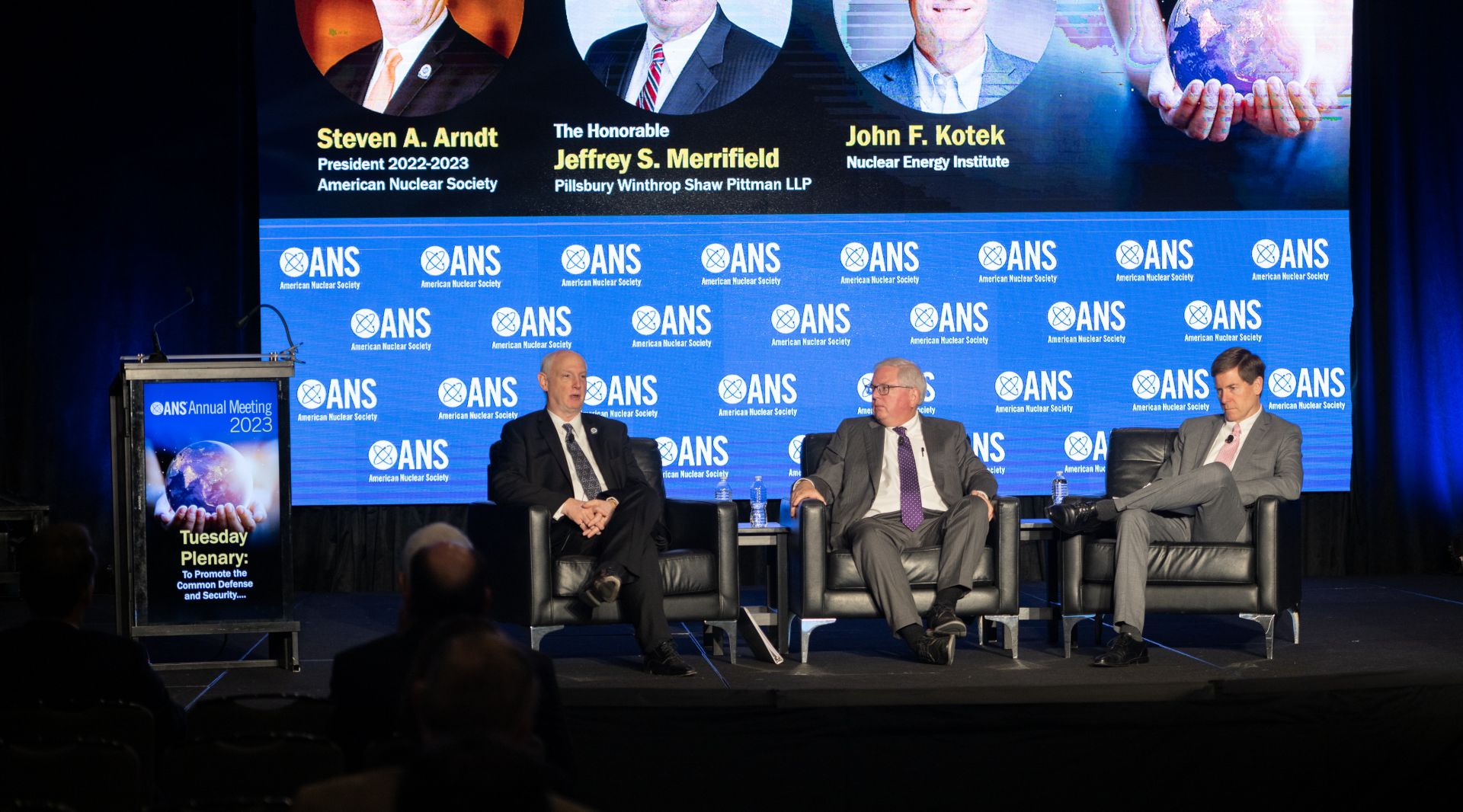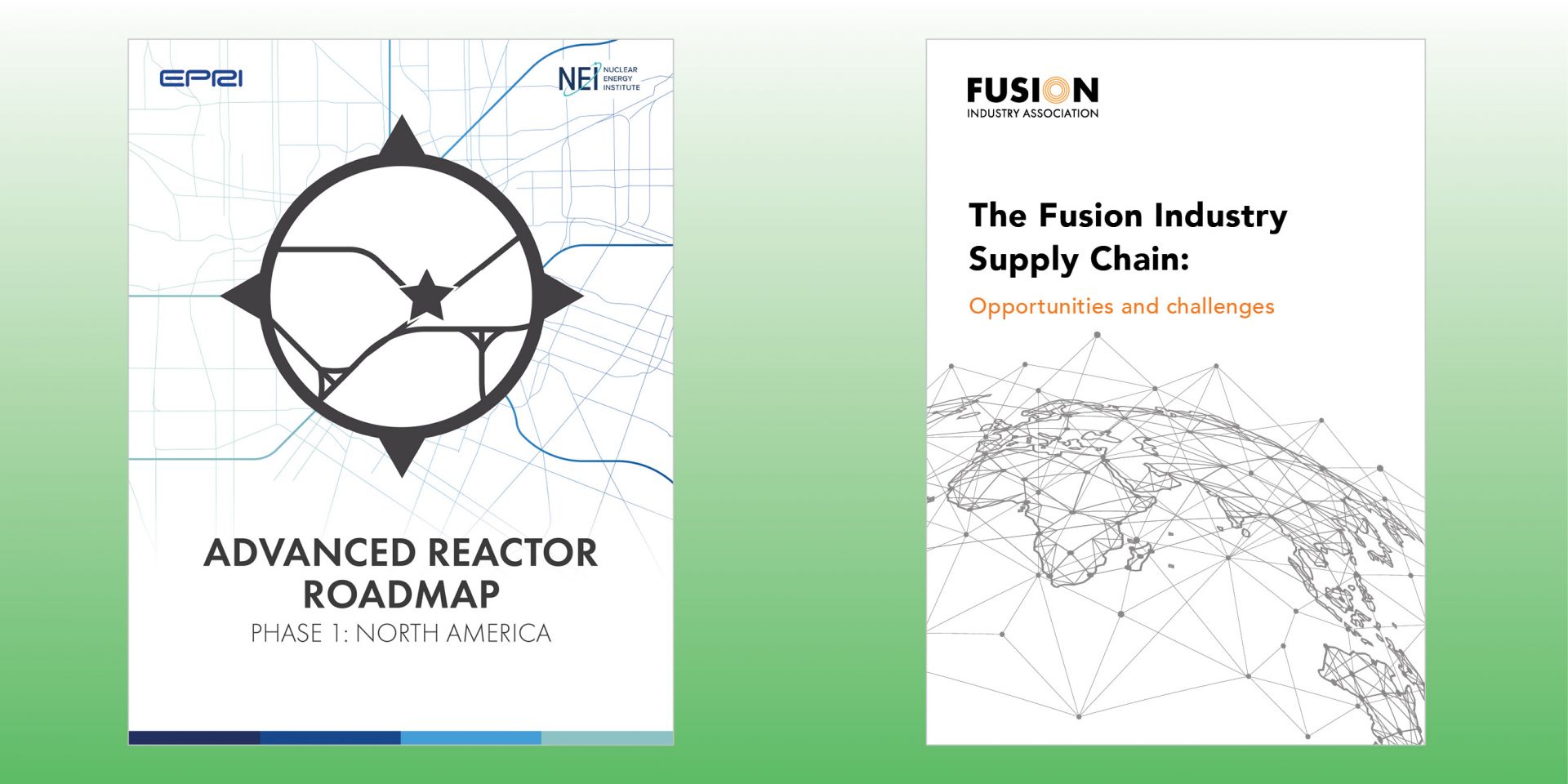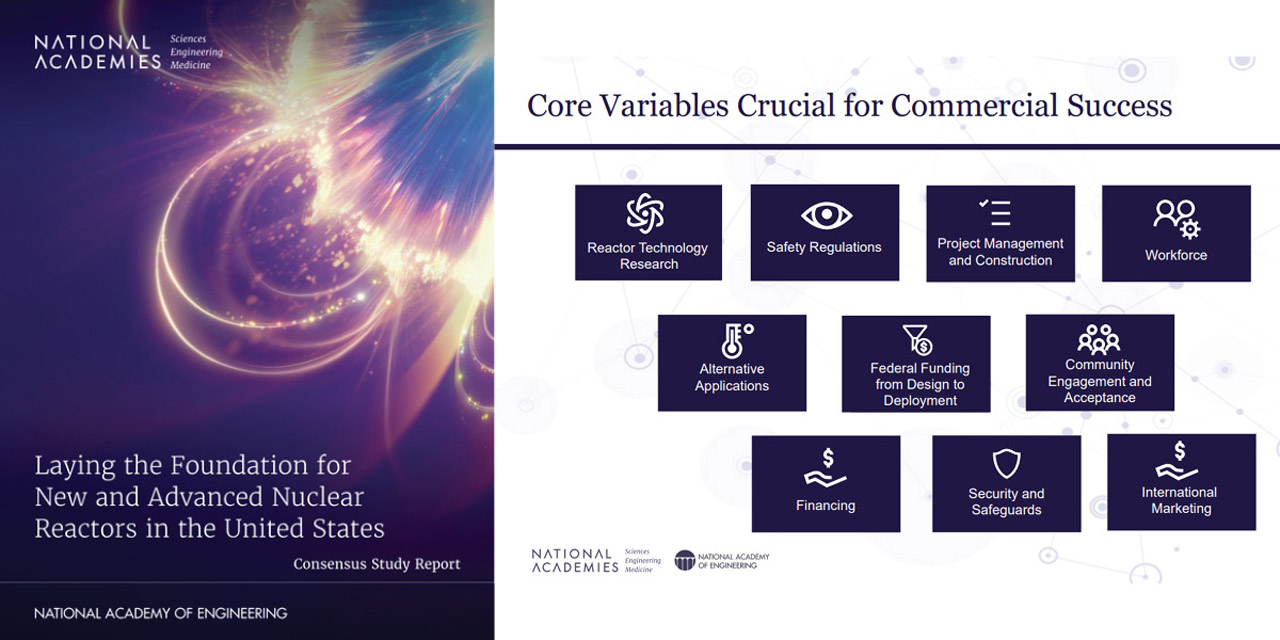Go with the flow
Nuclear thermal hydraulics—for light water reactors or advanced reactors cooled by gas, metal, or salt—is all about defining safety and performance margins as things heat up.

A message from Goodway
Dry Ice Blasting: A Game-Changer for Safe Cleaning and Decontamination in Nuclear Power Plants
Nuclear thermal hydraulics—for light water reactors or advanced reactors cooled by gas, metal, or salt—is all about defining safety and performance margins as things heat up.
Five pronuclear organizations—the Breakthrough Institute, Clean Air Task Force, ClearPath, Nuclear Innovation Alliance, and Third Way—have together penned a letter to the Nuclear Regulatory Commission, calling on the agency to take action on its emergency preparedness for advanced reactors rule—which, despite the explosion of interest in these technologies over the past few years, has yet to be finalized.
A large, bipartisan group of Capitol Hill lawmakers last Friday wrote a letter to the members of the Nuclear Regulatory Commission urging them “to carefully review and modify as necessary” the 10 CFR Part 53 draft licensing framework for advanced nuclear reactor technologies.
Take note! Registration closes today for the U.S. Department of Energy Conference for Newcomers: Understanding Exports of Advanced Reactor Technologies, scheduled for July 26–27 at Argonne National Laboratory in Lemont, Ill.
Contact Mercedes Trent (mercedes.trent@nnsa.doe.gov) to sign up for the conference. Additional information will follow upon registration.

Advanced reactors may be key to a clean energy future, but to prove it they’re going to need fuel—and that fuel will be derived from limited uranium resources and managed throughout the nuclear fuel cycle, whether that cycle is open (like the current fuel cycle) or closed (with reprocessing). Six panelists convened on June 12 during the Annual Meeting of the American Nuclear Society for the executive session “Merits and Viability of Advanced Nuclear Fuel Cycles: A Discussion with the National Academies.” They discussed those fuel cycles and the findings of a National Academies of Science, Engineering, and Medicine (NASEM) consensus committee released as a draft report in November 2022 and published earlier this year.

At the 2023 ANS Annual Meeting, Steven Arndt (as of the close of the meeting, ANS immediate past president) led a president’s session on the mission of the Nuclear Regulatory Commission—a not particularly surprising topic, given that he spent over 30 years at the agency in various roles.

Sola Talabi
Advanced reactor risk management creates awareness, assessment, and action on issues of uncertainty to ensure safe, cost-effective, and on-schedule deployment of advanced reactors. It requires people, processes, and tools to identify and assess risks both qualitatively and quantitatively.
For safety risk, this requires characterizing how advanced reactor features such as natural convective cooling may reduce or retire risks. It also includes identifying and assessing new risks that may be introduced by advanced reactor features. Retired and reduced safety risks include certain loss-of-coolant accidents because the pumps and piping systems associated with these accident scenarios are eliminated. New safety risks that may be introduced include resuspension of fission products due to the higher containment aspect ratios that some advanced reactors have. New transportation risks may arise in the case of irradiated microreactors after service. Hence, advanced reactor risk assessments should include a mechanistic assessment of the net effect of the retired and new risks to quantitatively characterize overall plant safety. This may be achieved with probabilistic risk assessment procedures and tools.
The Department of Energy released two draft requests for proposals to acquire high-assay low-enriched uranium (HALEU)—one covering enrichment services that could include the production of between 5 and 145 metric tons of HALEU during a 10-year performance period, and another for deconverting that HALEU from uranium hexafluoride (UF6) gas to metal or oxide forms in preparation for fuel fabrication. The DOE also issued a notice of intent to fulfill its National Environmental Policy Act (NEPA) obligations for the HALEU Availability Program by launching the scoping process for an environmental impact statement; that notice was published in the Federal Register on June 5.
![]() Here is a recap of industry happenings over the past month:
Here is a recap of industry happenings over the past month:
Partnership formed to study X-energy’s SMR in commercial conditions
X-energy and Kinectrics have launched a partnership to design, build, and operate a commercial-scale test facility to study the performance of the Xe-100 advanced small modular reactor in helium--based high-temperature, high--pressure operating conditions. The test facility, the site for which is to be announced sometime this summer, may be completed and operational by 2025.

Reports released this week point to a clean energy future fueled by atomic energy—if and when pressing supply chain issues can be resolved. Advanced Reactor Roadmap, Phase 1: North America, released on May 15 by the Electric Power Research Institute and the Nuclear Energy Institute, takes a broad look at the deployment of advanced fission reactors and identifies supply chain ramp-up as one key enabler. The Fusion Industry Supply Chain: Opportunities and Challenges, released by the Fusion Industry Association on May 17, focuses on fusion energy supply chain issues.

Purdue University and Duke Energy released an interim report on May 10 that documents the first year of an ongoing feasibility study, first announced in April 2022, that could help bring nuclear power to the state of Indiana. No technology has been selected and no decision to build a new nuclear plant has been made at Purdue University or elsewhere in the state, but in the Small Modular Reactor and Advanced Reactor Feasibility Study Interim Report the study participants conclude that “small modular reactors and advanced reactors are a viable option that warrant continued exploration to meet the future carbon-free energy needs of Purdue University and Duke Energy Indiana.”
The Department of Energy yesterday announced the awarding of $22.1 million to 10 industry-led nuclear projects, including two aimed at expanding clean hydrogen production and one at advancing a microreactor design. Other projects selected for funding are focused on addressing nuclear regulatory hurdles, improving existing reactor operation, and facilitating new advanced reactor developments.
Abstracts for all 10 projects can be found here.

Richard Meserve, who for more than two years chaired the National Academies of Sciences, Engineering, and Medicine (NASEM) Consensus Committee on Laying the Foundation for New and Advanced Nuclear Reactors in the United States, introduced its 300-page report on April 27 during a public briefing.
NuScale Power and TerraPower both signed agreements earlier this week with South Korean entities to support development of the American firms’ respective reactor technologies.
![]() Here is a recap of industry happenings over the past months:
Here is a recap of industry happenings over the past months:
ADVANCED REACTOR MARKETPLACE
Ultra Safe and Framatome reach TRISO agreement
Ultra Safe Nuclear and Framatome have signed a nonbinding agreement to manufacture commercial quantities of TRISO fuel for advanced reactor designs, including USNC’s Micro Modular Reactor. It is expected that the manufacturing of both TRISO fuel particles and USNC’s fully ceramic microencapsulated fuel will begin in late 2025, with production capacity being made available to the broader global commercial market. At-scale production lines for these materials have been demonstrated at USNC’s Pilot Fuel Manufacturing facility in Oak Ridge, Tenn., the first privately funded producer of TRISO fuel particles in the United States.

G7 governments should support life extension for today’s power reactor fleet, restart operable units, and accelerate the deployment of advanced reactors, states a joint declaration issued April 16 at the Nuclear Energy Forum, a first-of-its-kind colloquy held on the margins of the G7 Ministers’ Meeting on Climate, Energy and Environment in Sapporo, Japan.

A new report from the environmental advocacy group RePlanet makes the case for recycling used nuclear fuel for use in advanced power reactors. According to the report, What a Waste: How fast-fission power can provide clean energy from nuclear waste, by using current inventories of used fuel and depleted uranium stocks in Europe and the United Kingdom, fast breeder reactors could generate between 600 and 1,000 years of carbon-free electricity for the entire European Union.

The United States and Canadian nuclear industries used to be an example of how two independent teams of engineers facing an identical problem—making electricity from uranium—could come up with completely different answers. In the 1950s, Canada began designing a reactor with tubes, heavy water, and natural uranium, while in the U.S. it was big pots of light water and enriched uranium.
But 80 years later, there is a remarkable convergence. The North American push for a new generation of nuclear reactors, mostly small modular reactors (SMRs), is becoming binational, with U.S. and Canadian companies seeking markets and regulatory certification on both sides of the border and in many cases sourcing key components in the other country.

The Department of Energy released Pathways to Commercial Liftoff: Advanced Nuclear earlier this month. It is one of the first in a series of reports on clean energy technologies and the private and public investments needed to overcome hurdles to full-scale deployment. The report makes a clear case for investment in nuclear power and challenges potential investors and operators to move beyond the current “wait and see” stalemate and generate “a committed orderbook . . . for 5–10 deployments of at least one reactor design by 2025.”

The United States and Indonesia have announced a strategic partnership to help the latter nation develop its nuclear energy program, supporting its interest in deploying small modular reactors to meet energy security and climate goals.